Multiple muscarinic pathways mediate the suppression of voltage-gated Ca2+ channels in mouse intestinal smooth muscle cells
- PMID: 20050185
- PMCID: PMC2807649
- DOI: 10.1111/j.1476-5381.2009.00475.x
Multiple muscarinic pathways mediate the suppression of voltage-gated Ca2+ channels in mouse intestinal smooth muscle cells
Abstract
Background and purpose: Stimulation of muscarinic receptors in intestinal smooth muscle cells results in suppression of voltage-gated Ca2+ channel currents (I(Ca)). However, little is known about which receptor subtype(s) mediate this effect.
Experimental approach: The effect of carbachol on I(Ca) was studied in single intestinal myocytes from M2 or M3 muscarinic receptor knockout (KO) and wild-type (WT) mice.
Key results: In M2KO cells, carbachol (100 microM) induced a sustained I(Ca) suppression as seen in WT cells. However, this suppression was significantly smaller than that seen in WT cells. Carbachol also suppressed I(Ca) in M3KO cells, but with a phasic time course. In M2/M3-double KO cells, carbachol had no effect on I(Ca). The extent of the suppression in WT cells was greater than the sum of the I(Ca) suppressions in M2KO and M3KO cells, indicating that it is not a simple mixture of M2 and M3 receptor responses. The G(i/o) inhibitor, Pertussis toxin, abolished the I(Ca) suppression in M3KO cells, but not in M2KO cells. In contrast, the G(q/11) inhibitor YM-254890 strongly inhibited only the I(Ca) suppression in M2KO cells. Suppression of I(Ca) in WT cells was markedly reduced by either Pertussis toxin or YM-254890.
Conclusion and implications: In intestinal myocytes, M2 receptors mediate a phasic I(Ca) suppression via G(i/o) proteins, while M3 receptors mediate a sustained I(Ca) suppression via G(q/11) proteins. In addition, another pathway that requires both M2/G(i/o) and M3/G(q/11) systems may be operative in inducing a sustained I(Ca) suppression.
Figures
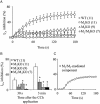
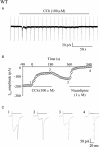
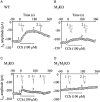
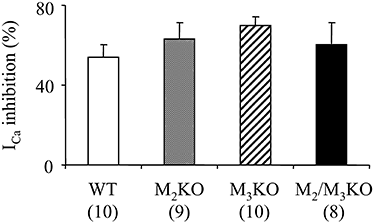
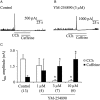
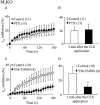
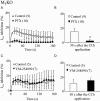
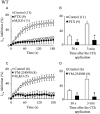
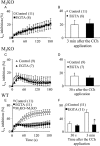
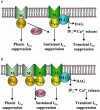
References
-
- Dustin P. General physiology of tubulins and microtubules. In: Dustin P, editor. Microtubules. New York: Springer-Verlag; 1984. pp. 94–126.
Publication types
MeSH terms
Substances
LinkOut - more resources
Full Text Sources
Research Materials
Miscellaneous

